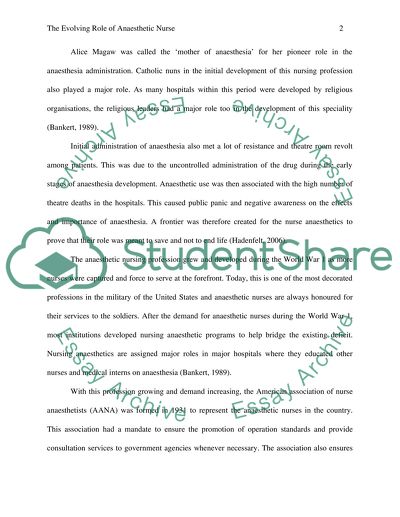Cite this document
(“CRITICALL REVIEW AND JUDGE THE EVOLVING ROLE OF THE ANAESTHETIC NURSE Essay”, n.d.)
CRITICALL REVIEW AND JUDGE THE EVOLVING ROLE OF THE ANAESTHETIC NURSE Essay. Retrieved from https://studentshare.org/nursing/1482453-criticall-review-and-judge-the-evolving-role-of
CRITICALL REVIEW AND JUDGE THE EVOLVING ROLE OF THE ANAESTHETIC NURSE Essay. Retrieved from https://studentshare.org/nursing/1482453-criticall-review-and-judge-the-evolving-role-of
(CRITICALL REVIEW AND JUDGE THE EVOLVING ROLE OF THE ANAESTHETIC NURSE Essay)
CRITICALL REVIEW AND JUDGE THE EVOLVING ROLE OF THE ANAESTHETIC NURSE Essay. https://studentshare.org/nursing/1482453-criticall-review-and-judge-the-evolving-role-of.
CRITICALL REVIEW AND JUDGE THE EVOLVING ROLE OF THE ANAESTHETIC NURSE Essay. https://studentshare.org/nursing/1482453-criticall-review-and-judge-the-evolving-role-of.
“CRITICALL REVIEW AND JUDGE THE EVOLVING ROLE OF THE ANAESTHETIC NURSE Essay”, n.d. https://studentshare.org/nursing/1482453-criticall-review-and-judge-the-evolving-role-of.


